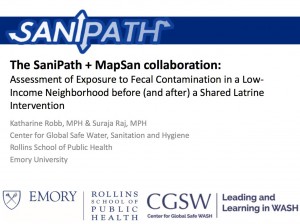Public toilets and their customers in low-income Accra, Ghana
, , , , , , and
Abstract: Public pay-per-use toilets are the only alternative to open defecation for a significant number of people in many low-income, urban neighbourhoods where insecure tenure, space constraints, and/or cost make private sanitation facilities unfeasible. This study explores public toilet use, characteristics of public toilet customers and possible improvements to public toilet facilities in four neighbourhoods in Accra, Ghana, the country with the highest reliance on shared sanitation facilities globally. READ MORE



